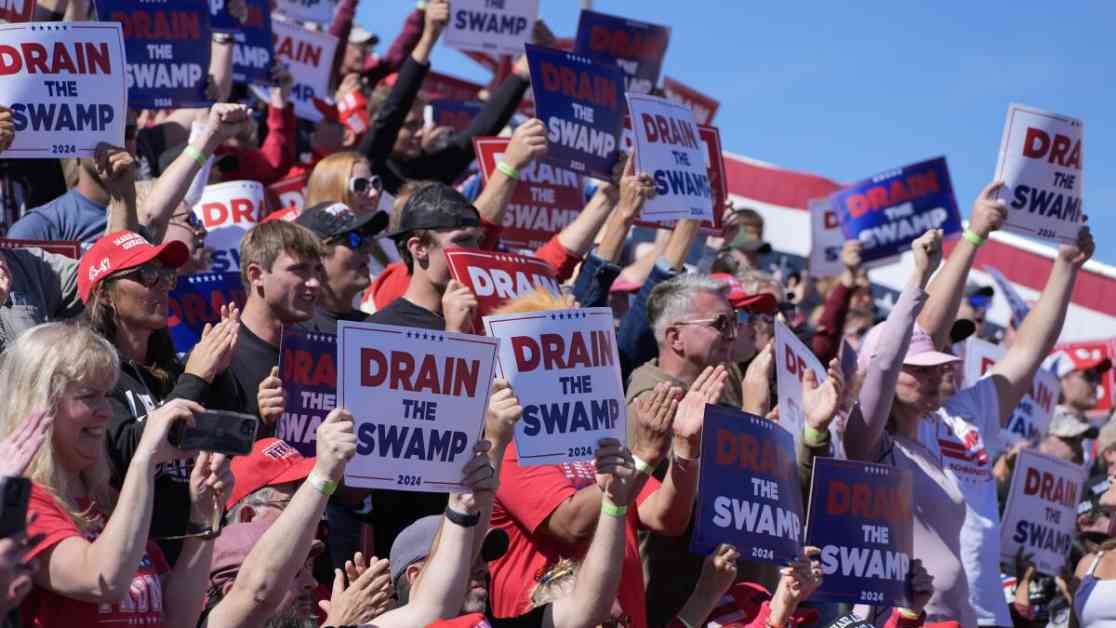Decoding the Difference Between the ‘Deep State’ and ‘the Swamp’ in Trump’s Targets
Donald Trump, the former president, has often expressed his determination to take on what he calls the ‘deep state’ and ‘the swamp’ once he returns to the White House. These terms have become familiar to many, but the distinction between them remains murky.
Defining the Deep State and the Swamp
The deep state and the swamp are two distinct concepts that Trump and his supporters have vowed to tackle. However, Trump himself tends to use these terms interchangeably, leading to confusion among the public and the media. Understanding the nuances between the deep state and the swamp is crucial for any efforts to combat them effectively.
The Swamp: A Hotbed of Self-Interest
The swamp is a metaphorical representation of Washington, D.C., as a humid, malarial ecosystem filled with various self-interested individuals pursuing their own agendas. This environment, characterized by favor-dealing, rent-seeking, and back-scratching, has long been a part of the nation’s capital’s reputation. The challenge lies in untangling the complex web of interests that make up the swamp and distinguishing between legitimate governance and corrupt practices.
The Deep State: A Network of Operatives
In contrast, the deep state refers to a network of disciplined, professional, and secretive operators within the government working towards a common agenda. While some view the deep state as a sinister force manipulating events behind the scenes, others see it as a decentralized collection of competing factions with varying goals. The perception of the deep state as a monolithic entity akin to a comic book supervillain is largely a conspiracy theory rather than a reality.
The Intersection of Politics and Bureaucracy
One of the key challenges in addressing both the deep state and the swamp is the close relationship between political interests and bureaucratic entities. The intricate web of connections between government agencies, private-sector firms, and political constituencies complicates any attempts to root out corruption and inefficiency. While draining the swamp may sound appealing, the reality of dismantling entrenched interests and power structures is far more complex.
In Conclusion
As we navigate the complexities of the deep state and the swamp, it is essential to approach these issues with a critical eye and a nuanced understanding of the forces at play. By shedding light on the differences between these two concepts, we can begin to unravel the intricacies of governance and hold our leaders accountable for their actions. The road ahead may be challenging, but with clarity and determination, we can strive towards a more transparent and accountable government for all.
Remember, the next time you hear about draining the swamp or combating the deep state, consider the complexities and nuances of these issues beyond the rhetoric. By staying informed and engaged, we can work towards a more just and equitable society for all.




